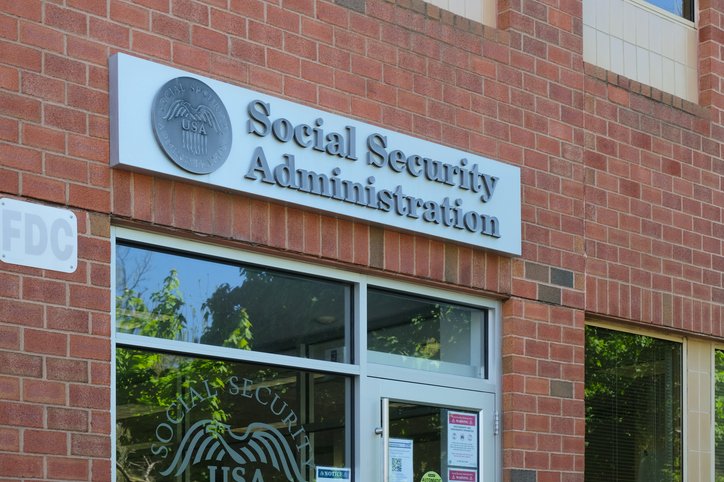Deciding whether to stop Social Security and restart it later depends on your age and how long you have been receiving benefits. If you have been on Social Security for less than 12 months, you can apply to withdraw your application. This will essentially erase the claim. For those who have reached full retirement age but are not yet 70, voluntarily suspending benefits is also an option.
A financial advisor can help you determine which path aligns with your long-term retirement plan.
Option 1: Withdrawing Your Application For a “Do‑Over” Option
If you have been receiving Social Security benefits for less than 12 months, the Social Security Administration (SSA) allows you to withdraw your application in writing. This is typically done by filling out Form SSA‑521.
Approved withdrawals void your application and require repayment of all benefits received. This includes those of any family members drawing from your record, as well as Medicare premiums. This option resets your benefit clock so you may reapply later, potentially at a higher monthly amount.
However, there are a few things to keep in mind:
- You must request the withdrawal within 12 months of the initial entitlement.
- You will need to repay every penny received under the initial claim, including Medicare and tax withholdings.
- After withdrawing, you can reapply in the future, likely resulting in a larger benefit if delayed.
Option 2: Voluntary Suspension After Full Retirement Age (FRA)
It is a straightforward process to suspend your benefits.
- To suspend your benefits, submit a request by phone, in writing or in person at your local Social Security office. Benefits (including those of dependents on your record) will stop the month after the request is processed.
- You can restart them anytime before age 70, or they will automatically resume at age 70.
- There is no requirement for repayment of past benefits.
How Options Vary By Age

Your options for withdrawing your Social Security benefits application or suspending your benefits vary, depending on your age.
Under Full Retirement Age
If you have not yet reached FRA and have been receiving benefits for less than a year, your only option is to withdraw your application and repay all benefits. Voluntary suspension is not available until you reach FRA.
From FRA to Age 70
At FRA, you can voluntarily suspend benefits to earn DRCs, serving as an appealing alternative to withdrawal. This strategy avoids repayment and boosts future benefits.
Age 70 or Older
No further benefit increase is available beyond age 70. If you are past 70 and have already suspended benefits, they will automatically restart without additional credits.
| Option | Timeframe | Repayment Required | Future Increase |
| Withdraw application | Within 12 months of filing | Yes | Can reapply later |
| Voluntary suspension | FRA to age 70 | No | ~8% per year (DRCs) |
Medicare and Health Coverage
Under a voluntary suspension, you are responsible for paying these premiums directly. SSA will bill you, and, once benefits resume, deduct any owed amounts from your resumed payments.
If you withdrew your Social Security application within the first 12 months, you must also repay any covered Medicare Part A expenses received. This includes hospital stays, skilled nursing or home health costs paid on your behalf. There is no premium for Part A itself if you qualify for premium‑free Part A. However, covered services must be reimbursed. You will also need to repay Part B premiums that are eligible for withholding.
Suspending benefits shifts Medicare billing to you and requires timely payment. However, withdrawals trigger repayment of both Social Security and Medicare-covered Part A services.
It is wise to plan ahead to avoid coverage lapses or unexpected bills; Medicare could terminate your coverage after a grace period of non-payment.
Working While Receiving Benefits
If you are thinking about stopping Social Security benefits and restarting them later while also planning on going back to work, it is important to know how your employment affects benefit options.
Earnings Limits Before Full Retirement Age
If you claim benefits before your FRA, annual earnings above the SSA’s threshold ($23,400 in 2025) will reduce your benefits. SSA deducts $1 for every $2 earned above the limit.
In the year you reach FRA, the threshold rises to $62,160, up to the month you reach FRA. The deduction also becomes $1 for every $3 over $62,160, until you reach FRA.
Returning to Work After FRA
Once you have reached your full retirement age, the earnings test no longer applies. This means you can voluntarily suspend your benefits, work freely and collect larger future benefits due to delayed retirement credits (about 8% per year) with no penalties.
Suspending instead of withdrawing means you will not need to repay benefits while boosting future income.
Using a Work Breakpoint Strategically
If you are close to FRA and expect to exceed earnings limits, withdrawing benefits within the first 12 months could be beneficial if you expect your income to drop or your work situation to change. Alternatively, if you have already reached FRA, suspending benefits could align with working since it avoids repayment and maximizes future credits.
Pairing these strategies with a work breakpoint—an anticipated change in employment income—can help you determine whether to pause benefits and restart later.
Bottom Line

Social Security offers limited but flexible ways to pause and resume benefits, depending on your age and situation. Whether you’re reconsidering an early claim or planning around a change in income, both withdrawal and suspension come with trade-offs. Timing, repayment rules and how Medicare is handled all factor into the decision. With the right approach, it’s possible to shift your strategy without permanently locking in your initial choice.
Social Security Planning Tips
- A financial advisor can help you time your benefits and integrate them into a comprehensive retirement income plan. Finding a financial advisor doesn’t have to be hard. SmartAsset’s free tool matches you with vetted financial advisors who serve your area, and you can have a free introductory call with your advisor matches to decide which one you feel is right for you. If you’re ready to find an advisor who can help you achieve your financial goals, get started now.
- Since Social Security calculates benefits based on your 35 highest-earning years, working additional years—or replacing lower-earning years—can raise your average earnings subject to the formula. For individuals with fewer than 35 years of coverage, each extra year can noticeably boost benefit amounts.
Photo credit: ©iStock.com/Ridofranz, ©iStock.com/Veronique D, ©iStock.com/Inside Creative House
Read the full article here
















